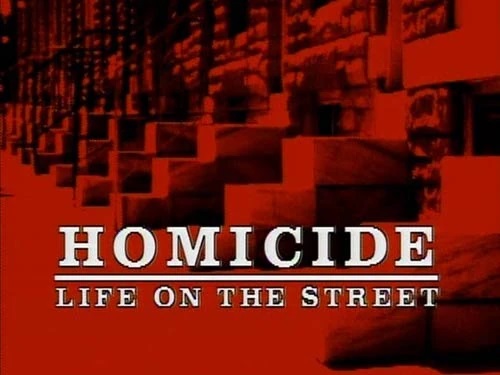Welcome to Retro Television Reviews, a feature where we review some of our favorite and least favorite shows of the past! On Sundays, I will be reviewing Homicide: Life On The Street, which aired from 1993 to 1999, on NBC! It can be viewed on Peacock.
This week, the detectives take over someone else’s house.
Episode 4.16 “Stakeout”
(Dir by John McNaughton, originally aired on March 15th, 1996)
When a young man confesses to helping an older man carry out a series of murders, the Homicide Squad stakes out the older man’s house. Jim True-Frost and Kate Walsh play the owners of the home that the squad takes over. The husband is out of work. The wife has a habit of oversharing. While they try to adjust to having cops hanging out in their living room, the detectives adjust to the idea that Bayliss may be leaving them.
Once again, Bayliss is thinking about leaving Homicide. This has been a recurring theme with Bayliss, ever since he failed to close the Adena Watson case. (In this episode, he mentions that his number one suspect — Risley Tucker — has recently died.) Bayliss’s complaint is that he still feels like he barely knows the other detectives. He mentions that he’s never even been to Pembleton’s house. Pembleton asks if Bayliss is really that surprised that Pembleton might want time to himself when he’s not on the clock. Bayliss talks about how the Vice Squad regularly has barbecues. He talks about the comradery that he felt when he was on the Governor’s security detail. But Homicide tends to attract the misanthropes and the eccentrics.
Of course, Bayliss doesn’t leave Homicide. At the end of the episode, he takes one look at the board and sees that he still has one open case. “I can’t leave until the Lambert case is closed,” Bayliss says while Pembleton smiles.
Giardello, meanwhile, is struggling with the knowledge that his daughter is getting married to a man that he’s never even met. Giardello has been invited to the wedding in San Francisco but he keeps finding excuses not to go. Pembleton finally convinces Giardello that he needs to go to his daughter’s wedding. Unfortunately, when Giardello arrives at the airport, he’s told that all flights have been grounded due to the weather. So, Giardello misses the wedding regardless.
Eventually, the killer returns to his home. He’s a stout man who looks like he should be selling insurance. Bayliss and Pembleton arrest him and the stakeout ends. The husband, who has been out looking for a job, pulls up just as Bayliss and Pembleton are leaving. Life goes on for everyone but the dead.
This episode was okay. I appreciated that it was a return to the character-driven drama of the earlier seasons. The snowy imagery brought a lot of atmosphere to the episode and director John McNaughton (of Henry: Portrait of a Serial Killer fame) did a good job framing scenes that could have come across as being excessively talky in lesser hands. That said, the husband and the wife were not that interesting and I never really bought the idea that they would pour out all of their marital woes to a bunch of strangers in their living room.
This is my final Homicide review for 2025. Retro Television Reviews is taking a break for the holidays! Homicide will return on January 11th, 2026.
